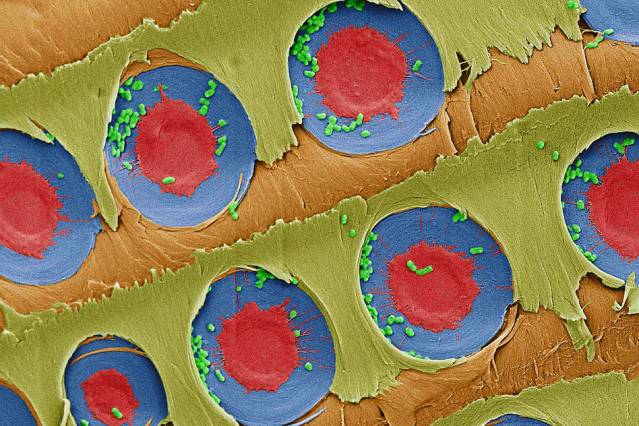
As significant snapshots go, it’s hard to trump the substance of the first photograph ever taken. Strange, too, that we only know it was taken in either 1826 or 1827. Frenchman Joseph Nicéphore Niépce’s ‘View From The Window at Le Gras’, as it has come to be known, remains preserved in a state of ambiguity, while today time and date stamps flow matter-of-factly through our devices. Two hundred years later, photography is a medium so pervasive that we are in danger of trivialising its powers. This is an exploration of those powers and their capacity to communicate worlds not necessarily unknown, but certainly perspectives unseen. This story takes you on a journey from the earliest days of photography along a path that looks at everything from photography as an art form to photos that literally changed the world. 
[ 1765 - 1833 ]
Joseph Nicéphore Niépce The opportunity to influence how a moment is visually represented must be seen as a watershed in human history. Before that juncture, if you didn’t witness something yourself, all you had to go on were the words or drawings of others in your mind’s eye. But as the technology improved and its use quickly spread, photography became another medium through which news could travel and crucially, be sold. While news corporations and advertisers rubbed their hands with glee, photography’s power to inspire and delight met head on with its capacity to horrify and outrage. As your memory of seismic world events will remind you, your mind works strongest when appalled. The advent of digital photography in the 1990s meant that the quality of cameras rose at the same time as the price of entry fell. This coincided with the dawn of the internet, so our exposure to powerful images exploded. Now, our days are awash with the freeze-framed moment. Millions of pictures are uploaded every minute and . This egalitarian reality has created the need for professionals to seek new and untried ways to distinguish their work and elevate their art. LIGHT + DRAWING = PHOTOGRAPHY The word photography derives from the Greek photos (“light”) and graphe (“drawing”). A French painter, Hercules Florence, who used it in his diary to describe the process, coined the term. 

Is it that they haul precious particles of time and space right into our present moment? Or is it the visual cues of shapes and colours that spark our memories? The answer of course is a combination of both, when we consider what our understanding of human psyche tells us. Our consciousness is less concerned with spectacle than with connecting the dots. Newspapers and magazines are skilled in pushing agendas or jokes with well-written captions, but photographs are most powerful when our brains make more intensely personal connections with the image. Newspapers and magazines are skilled in pushing agendas or jokes with well-written captions, but photographs are most powerful when our brains make more intensely personal connections with the image. That’s where our instincts to relate and reveal, to celebrate and protect, come into their own. That’s where our instincts to relate and reveal, to celebrate and protect, come into their own. Captions are not essential to our appreciation of photography (and indeed a relatively recent development) but often the circulation and appropriation of iconic images means they inevitably come to play a part in our understanding of public events. To simplify the matter, Robert Hariman, co-author of No Caption Needed has put it this way: “It might help to ask what one finds in photography that they don’t find elsewhere…” 1.3 million Hurricane Sandy photos were posted to Instagram at a speed of 10 photos per second 
Photography as a commodity has become a multi-billion dollar industry, made possible by the worlds of fashion, sport and celebrity. With all artistic respect to the 2000 snaps on your phone, there exists an altogether different breed of photograph, those that have made the jump into a realm where iconography, scarcity and contemporary art meet to generate million-dollar valuations and legendary statuses. Take, for example, ‘Rhein II’, by Andreas Gursky (1999). It’s not known who bought this 12ft-wide, Plexiglass-mounted picture of the Rhine River in Germany for $4.3 million (US) at auction in 2011, but they obviously saw something in it that stirred them. It’s one of a set of six; the others hang at the New York museum of modern art and the Tate Modern in London. And consider the fees that the uber photographers of the world can command. Names such as Morgan Norman, Lynsey Addario, George Steinmetz, Terry Richardson, Annie Leibovitz regularly hit the rich lists - and for good reason. Their attention to detail and ability to dominate their chosen niches leave little room for competitors, only innovators. These aren’t overnight success stories, they’re careers forged through years of toil and hustle. 1923 LEICA CAMERA $2.8 MILLION 
The most expensive camera ever sold was a rare 1923 Leica camera, which went for $2.8 million at auction in Vienna. There are different ways to look at the popularisation of photography through technology. Some welcome change and argue in favour of progress. Others bemoan the belittlement of an art form and of an education in shooting on film and working in darkrooms. While our professional-standard camera phones leave little room for the sentimental, they have great storage capacity (even for the dud photos). The interesting thing about photography is that despite the march of technology, the essence of a captured image that first entranced Joseph Nicéphore Niépce remains. It’s far easier for anyone to capture a technically proficient image, but the skill of making it aesthetically pleasing and emotionally resonant doesn’t come with a digital camera. It remains an elusive skill. From the first daguerreotype camera through to the very latest digital SLR, the pace of change has been dramatic. Those who have moved with the times will still work fully cognizant of light and exposure, but the difference today is that errors are easily tweaked back on the computer with photo editing software. Every click of the shutter used to cost money, but now there’s far more room to fire away, experiment and take chances. This, perhaps, is technology’s greatest achievement. JAMES CLERK MAXWELL 1861 
James Clerk Maxwell, a Scottish physicist, created the first colour photograph in 1861. He photographed a tartan ribbon three times, using a red, blue and yellow filter, and combined the three images into the final colour composite. One only needs to spend some time browsing Instagram’s most popular images to see that some people are better at acquiring followers than others. So despite a proliferation of social media platforms and photo filtering apps, those with an eye for a frame and a sense of timing are still able to distinguish their abilities. The psychologist and Nobel Prize winner Daniel Kahneman has pointed out that “The ‘Instagram Generation’ now experiences the present as an anticipated memory”, which is to say that we have a brand new demographic that treats the present moment as something that needs to be reflected upon later. Futurist Jason Silva has pointed out that we now, through cropping, filtering and anticipating ‘Likes’, take it upon ourselves to ‘design’ what that later moment is going to feel like. Is this a good thing or a bad thing? It’s certainly a real thing and it’s here to stay. While it’s easy to dismiss this development as a narcissistic one, it’s also reasonably straightforward to argue that it’s a liberating development. We have been given the power to design our own memories and narratives, the freedom to choose how we want to remember things. PHILIPPE KAHN 1997 - 
The first photo to be shared using a mobile phone was taken in 1997 by Philippe Kahn. He sent snaps from the maternity ward where his daughter Sophie was born. Kahn, an inventor from France, is credited with developing the world's first camera phone. The Arcanum - The Magical Academy for the Mastery of the Arts 
Google Lens Now that photography has become something that happens largely through our mobile devices, its collision course with the world of wearables is clear. Nascent technologies such as Google Glass, the Apple Watch and health monitor Fitbit tell us that everything from brainwave readers to exercise trackers will hit the mainstream within a few years. This isn’t a prediction, it’s a trend, with 90 million wearable devices expected to have shipped by the end of 2014. In the 1980s, professional photographers looked at emerging photographic technology such as auto focus and assumed that it would never be fast enough for shooting sports or wildlife. Little could they guess, however, that they were within two decades of someone strapping a GoPro camera [Watch the video] to a falcon for high definition to capture extraordinary video footage of the hunt and capture of a crow. As cloud storage grows more affordable, it does not defy logic to conclude that we will all, perhaps sooner than we realise, be recording every living minute of our days in order for future generations to play back and understand how we lived. Chris Darcy, the self-described ‘most connected man in the world’, who spends most days hooked up to at least ten data-capturing devices has said: Projects like The Arcanum will see technology take centre stage as the Master & Apprentice model becomes available to anyone with an internet connection. Designed to be a mentor-led, goal-based, social learning experience like no other in existence and is, according to The Arcanum CEO, Peter Giordano, “the most personal, effective and fun way to Level Up your skills in photography.” - 880 BILLION PHOTOS IN 2014 - 
Every 2 minutes today we snap as many photos as the whole of humanity took in the 1800s. Yahoo meanwhile estimates that in 2014, about 880 billion photographs will be taken. That's 123 photos for every man, woman and child on Earth. 
A brave new world or a dystopian mess? Technological change only comes in two packages; incremental or enormously disruptive. Speculating on the darker, scarier possibilities for our future is a fool’s errand, because the only certainty is change itself.Some, like URME are dedicated to protecting the public from surveillance and creating a safe space to explore our digital identities with prosthetic masks. Let’s focus instead on everything that’s real and beautiful about photography. As our technologies continue to collect, tweak, save and transmit an ever-growing flux of data, we are uploading nothing less than a new dimension of information. These photos are a reminder that there are landscapes that bind us all, whether they be real or of the mind. The gallery above consists of a selection of images with stories that may not be immediately obvious. When provided with context, however, they pack some emotional clout. Each picture has a story that tugs at the cords that run through us all. Even though the people and animals featured are complete strangers, it is their accompanying narrative that we as human beings can relate to. - LEFT VS RIGHT - 
A study by Kelsey Blackburn and James Schriillo from Wake Forest University found that the left side of peoples’ faces are perceived and rated as more aesthetically pleasing than the right. 
Consider, as a curtain closer, these words from Ross Anderson, the deputy editor of Aeon Magazine. Writing about the photographs taken by the Hubble Space Telescope, Anderson said: “Through the sheer aesthetic force of its discoveries, the Hubble distilled the complex abstractions of astrophysics into singular expressions of colour and light, vindicating Keats's famous couplet: Though philosophy has hardly registered it, the Hubble has given us nothing less than an ontological awakening, a forceful reckoning with what is. The telescope compels the mind to contemplate space and time on a scale just shy of the infinite.”
| 

















